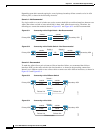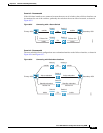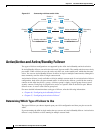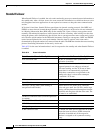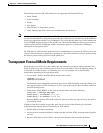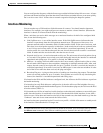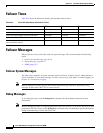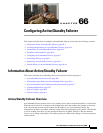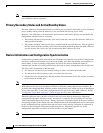
65-14
Cisco ASA 5500 Series Configuration Guide using ASDM
Chapter 65 Information About High Availability
Failover Health Monitoring
fover_parse: Rcvd image info from mate
auto-update: HA safe reload: reload active waiting with mate state: 20
auto-update: HA safe reload: reload active waiting with mate state: 20
auto-update: HA safe reload: reload active waiting with mate state: 20
auto-update: HA safe reload: reload active waiting with mate state: 20
auto-update: HA safe reload: reload active waiting with mate state: 20
auto-update: HA safe reload: reload active waiting with mate state: 20
auto-update: HA safe reload: reload active waiting with mate state: 20
auto-update: HA safe reload: reload active waiting with mate state: 20
auto-update: HA safe reload: reload active waiting with mate state: 20
auto-update: HA safe reload: reload active waiting with mate state: 20
auto-update: HA safe reload: reload active waiting with mate state: 20
auto-update: HA safe reload: reload active waiting with mate state: 20
auto-update: HA safe reload: reload active waiting with mate state: 20
auto-update: HA safe reload: reload active waiting with mate state: 20
auto-update: HA safe reload: reload active waiting with mate state: 20
Beginning configuration replication: Sending to mate.
auto-update: HA safe reload: reload active waiting with mate state: 50
auto-update: HA safe reload: reload active waiting with mate state: 50
auto-update: HA safe reload: reload active waiting with mate state: 80
Sauto-update: HA safe reload: reload active unit at clock tick: 6266860
Auto-update client: Succeeded: Image, version: 0x6d091b43ce96243e29a62f2330139419
The following system log message is generated if the Auto Update process fails:
%ASA4-612002: Auto Update failed: file version: version reason: reason
The file is “image”, “asdm”, or “configuration”, depending on which update failed. The version is the
version number of the update. And the reason is the reason the update failed.
Failover Health Monitoring
The ASA monitors each unit for overall health and for interface health. See the following sections for
more information about how the ASA performs tests to determine the state of each unit:
• Unit Health Monitoring, page 65-14
• Interface Monitoring, page 65-15
Unit Health Monitoring
The ASA determines the health of the other unit by monitoring the failover link. When a unit does not
receive three consecutive hello messages on the failover link, the unit sends interface hello messages on
each interface, including the failover interface, to validate whether or not the peer interface is responsive.
The action that the ASA takes depends upon the response from the other unit. See the following possible
actions:
• If the ASA receives a response on the failover interface, then it does not fail over.
• If the ASA does not receive a response on the failover link, but it does receive a response on another
interface, then the unit does not failover. The failover link is marked as failed. You should restore
the failover link as soon as possible because the unit cannot fail over to the standby while the failover
link is down.
• If the ASA does not receive a response on any interface, then the standby unit switches to active
mode and classifies the other unit as failed.



